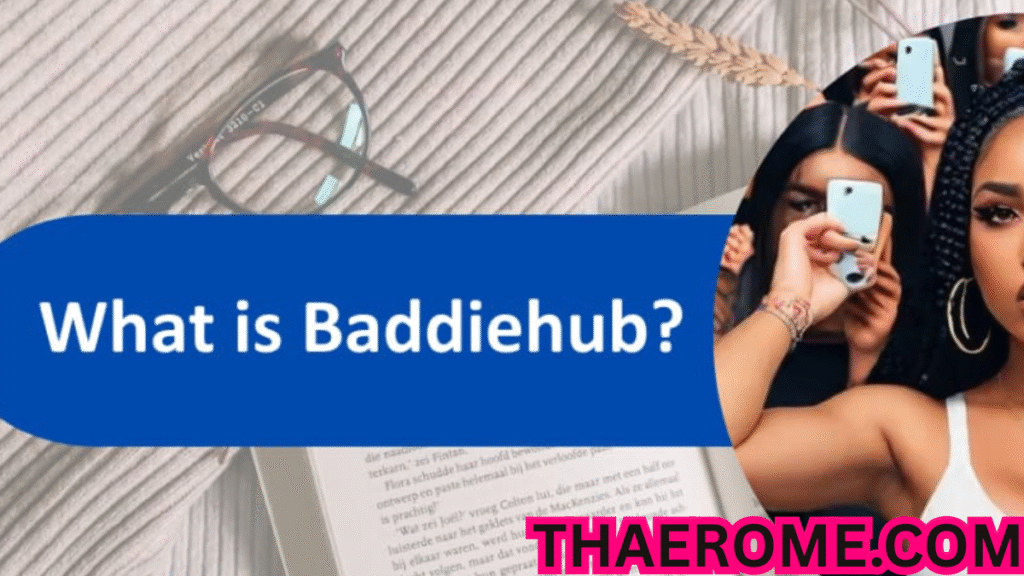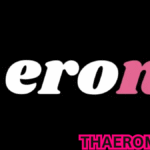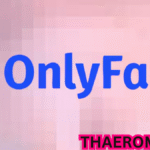Understanding the Concept of Baddiehub
Baddiehub The internet has become a space where niche communities, pop culture trends, and aesthetic identities thrive. One such trend that has grown rapidly in online conversations is “Baddiehub.” Though the name itself may sound simple, it represents a broader cultural wave deeply rooted in fashion, lifestyle, and digital identity. Baddiehub, as a concept, goes beyond a website or online portal—it embodies a community-driven aesthetic that resonates across social media platforms and influences a range of behaviors, from how people dress to how they express confidence and individuality.
Baddiehub reflects a specific kind of online persona and lifestyle. The term “baddie” is often used in pop culture to describe a confident, attractive, and fashion-forward individual, usually someone who posts curated photos, embraces beauty trends, and commands a significant online presence. When this aesthetic and lifestyle become centralized or promoted through a hub—hence, “Baddiehub”—it creates a cultural space where likeminded individuals gather, share, and influence each other.
The Evolution of the Baddie Culture
To understand Baddiehub, one must first delve into the origins of baddie culture. This trend started on platforms like Instagram, TikTok, and YouTube, where influencers began showcasing makeup techniques, streetwear fashion, and self-empowerment through curated content. The baddie look is characterized by strong eyebrows, glossy lips, perfectly styled hair, designer outfits, and an unapologetically confident attitude. These aesthetics often draw from hip-hop and urban culture and have become increasingly commercialized over time.
As the popularity of this style grew, it gave rise to various online communities, including Baddiehub, which became a central point of reference. Whether it originated as a content-sharing platform or as a symbolic term for collective identity, Baddiehub now denotes a space where the essence of being a baddie is celebrated, redefined, and amplified through digital interaction.
The Influence of Social Media on Baddiehub’s Popularity
Social media plays a crucial role in shaping and expanding the Baddiehub phenomenon. Platforms like Instagram, TikTok, Snapchat, and Twitter are fertile grounds for baddie content. Influencers, models, and everyday users share photos and videos that follow the baddie aesthetic, setting trends that ripple throughout global youth culture.
On TikTok, in particular, short video content allows creators to showcase makeup transformations, outfit hauls, and lifestyle vlogs that reinforce the baddie brand. Hashtags like #baddie, #baddievibes, or #baddiehub often accompany this content, helping users discover like-minded creators and aspirational aesthetics.
YouTube also contributes through tutorials and vlogs that offer insight into the lifestyle. Baddie-themed videos, such as “Baddie Transformation,” “How to Dress Like a Baddie,” or “Day in the Life of a Baddie,” continue to attract millions of views, underlining the demand for such content. The algorithm-driven nature of social media helps Baddiehub-related content go viral, feeding its rapid expansion and appeal.
The Commercial Aspect of the Baddie Aesthetic
With Baddiehub rising in popularity, it has inevitably drawn the attention of brands and marketers. The fashion and beauty industries, in particular, have capitalized on the trend by tailoring their products and campaigns to suit the baddie aesthetic. Influencers associated with Baddiehub or those who embody the look often become brand ambassadors for clothing lines, makeup brands, haircare products, and even fitness supplements.
Fast fashion websites are quick to emulate the latest baddie trends, offering clothing inspired by Instagram models and TikTok influencers. Similarly, cosmetic brands launch makeup collections that promise to help users achieve the perfect baddie glow, complete with contour kits, highlighters, and lip glosses.
E-commerce stores sometimes use the term “baddie” or include it in product names to attract audiences searching for this look. The Baddiehub brand, whether formally commercialized or community-owned, has turned into a marketing strategy that thrives on aesthetics and confidence-driven branding.
Cultural Implications and Criticism
Although Baddiehub celebrates empowerment and style, it is not without criticism. One of the major discussions surrounding the baddie culture is its emphasis on physical appearance and materialism. Critics argue that the pressure to conform to an idealized image—flawless skin, expensive clothes, curated content—can be mentally exhausting, particularly for young women and teens.
There’s also an ongoing conversation about cultural appropriation within the baddie movement. Many elements of the aesthetic are rooted in Black and Latino culture, from hairstyles to slang and fashion. However, when these styles are adopted without acknowledgment or understanding of their origins, it can lead to misrepresentation and exploitation.
Another concern revolves around the authenticity of the lifestyle. Many influencers present a highly curated and edited version of their lives, leading followers to feel inadequate or disconnected from their own realities. The competitive nature of baddie culture, often amplified by likes, followers, and comments, can become a double-edged sword.
Empowerment and Digital Identity Through Baddiehub
Despite these criticisms, many defend the Baddiehub identity as a form of self-expression and empowerment. For many individuals, embracing the baddie lifestyle means embracing confidence, self-worth, and independence. It becomes a way to reclaim power in a digital world that often marginalizes or silences certain groups.
The sense of community found in Baddiehub-related circles is significant. People share stories of personal growth, transformation, and support, using their digital presence to inspire others. The aesthetic, while visually driven, is often about more than beauty—it’s about attitude, self-care, and being unapologetically bold in one’s choices.
Moreover, the rise of micro-influencers and content creators who do not fit traditional beauty standards but still thrive within the Baddiehub ecosystem suggests that the trend is evolving. It is slowly becoming more inclusive and diverse, moving away from a one-size-fits-all image toward a more personalized and accessible identity.
Baddiehub and Its Place in Future Digital Culture
As we move deeper into the age of digital culture, Baddiehub and similar trends are likely to evolve. The increased use of AI in content creation, virtual influencers, and augmented reality filters could redefine how baddie content is produced and consumed. In the future, we might see virtual baddies—digitally rendered characters promoting products, aesthetics, and values associated with the Baddiehub lifestyle.
Furthermore, as younger generations continue to challenge societal norms and advocate for inclusivity, the baddie identity may shift further to accommodate a broader spectrum of experiences and appearances. This could transform Baddiehub from an aesthetic-based trend to a cultural movement emphasizing empowerment, representation, and authenticity.
The role of creators will also change, as users demand transparency and realness over perfection. Baddiehub might become a hub not just for visuals but for meaningful conversations about identity, self-love, and societal standards. In this way, Baddiehub may evolve from a style to a voice—one that amplifies individuality in the digital age.
FAQs
What is Baddiehub?
Baddiehub is a term that refers to a digital space or concept where the baddie lifestyle and aesthetic are celebrated. It represents an online culture centered on confidence, fashion, beauty, and social media presence.
Is Baddiehub an actual website or a cultural term?
While it may refer to a specific platform in some contexts, Baddiehub is more broadly understood as a cultural term representing the collective identity and aesthetic of baddie culture.
Who are the typical users or influencers associated with Baddiehub?
Individuals who align with the baddie aesthetic—confident, fashion-forward, often influential on platforms like TikTok, Instagram, and YouTube—are associated with Baddiehub.
Why is Baddiehub popular among Gen Z and Millennials?
The aesthetic aligns with values like confidence, individuality, and empowerment, all of which appeal to younger generations who use social media to shape and share their identity.
Is Baddiehub only about physical appearance?
While appearance plays a big role, Baddiehub also represents attitude, lifestyle, and personal expression. It promotes being bold, confident, and unapologetically oneself.
Does Baddiehub promote unrealistic beauty standards?
Some critics believe it can, due to the curated and edited nature of online content. However, many users are pushing for a more authentic and inclusive version of the baddie lifestyle.
Can anyone be part of Baddiehub culture?
Yes, the culture is increasingly inclusive, allowing people of different backgrounds, body types, and styles to participate and redefine what being a baddie means to them.
What is the future of Baddiehub?
Baddiehub is expected to evolve alongside technology and cultural shifts. It may embrace more digital tools and continue growing as a platform for identity, empowerment,Baddiehub and creativity.
Is there a dark side to Baddiehub culture?
As with many online trends, there can be downsides including social pressure, comparisons, and a focus on materialism. Awareness and balance are key to engaging with the culture healthily.
How can someone authentically engage with Baddiehub culture?
By embracing their unique style, expressing confidence, and engaging with the community in a respectful and supportive manner, individuals can authentically be part of the Baddiehub movement.


